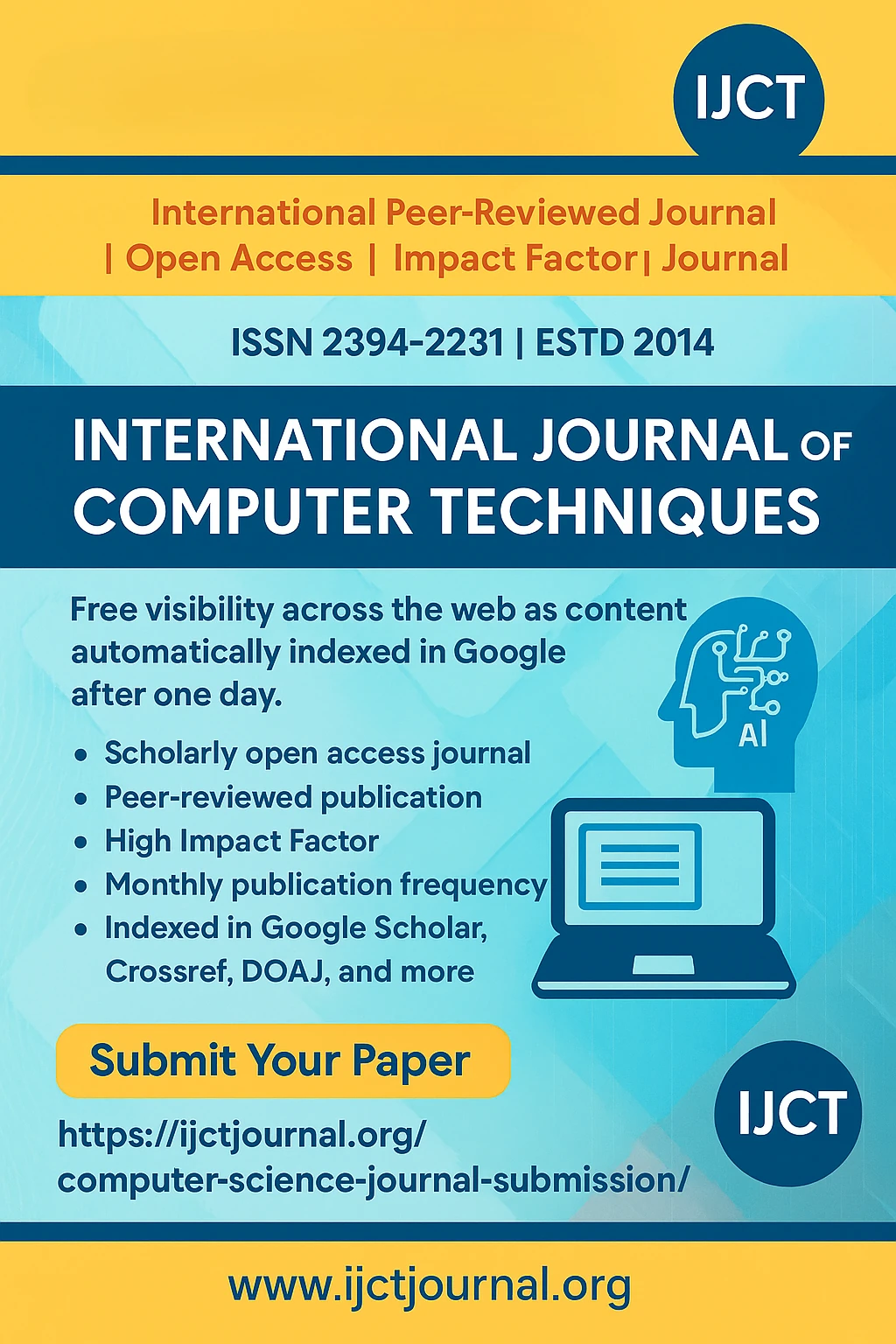
MedSynopsis : An AI System for Generating Timeline-Based Clinical Summaries from Heterogeneous Medical Records (Cardiology) | IJCT Volume 12 – Issue 6 | IJCT-V12I6P8


International Journal of Computer Techniques
ISSN 2394-2231
Volume 12, Issue 6 | Published: November – December 2025
Author
Saanvi R. Dhote, Ritisha Bobde, Prof. Umesh Nanavare
Abstract
Cardiology clinical records come in various document types, including discharge summaries, procedure reports, imaging findings, and laboratory timelines. Clinicians need to piece together this information manually to understand disease progression, treatment response, and outcomes. This process can create inefficiencies in workflow and increase the chance of missing important information. This paper introduces MedSynopsis, an AI-assisted system that creates concise, timeline-based clinical summaries from diverse cardiology records. The system conducts multi-document preprocessing, extracts events, and aligns timing to build a structured clinical timeline. A summarization module that focuses on timelines then produces clear chronological summaries that are helpful for clinical review and transitions between care. We evaluated the proposed method using synthetic and de-identified cardiology cases. We measured performance using ROUGE-L and accuracy in temporal ordering. The results show that aligning timelines makes summaries easier to understand compared to summaries without a time element. Although traceability of evidence and clinician involvement in reviews are areas for future improvement, MedSynopsis offers a practical way to reduce the burden of documentation and enhance the continuity of cardiology care.
Keywords
Cardiology summarization, temporal reasoning, multi-document synthesis, clinical NLP, timeline extraction.
Conclusion
This study introduces MedSynopsis, a system that creates timeline-based clinical summaries from various cardiology records. It addresses two important gaps in current summarization systems: combining multiple documents and maintaining the order of events. The results show that aligning events chronologically makes summaries easier to understand in a clinical context.
References
[1]L. Li et al., “Do Multi-Document Summarization Models Synthesize?”
TACL, 2023.
[2]A. Afzal, S. Kiritchenko, and I. Szpakowicz, “Hybrid Extractive- Abstractive Biomedical Summarization Using Transformers,” Journal of Biomedical Informatics, 2024.
[3]A. Leeuwenberg and M. Moens, “Temporal Information Extraction from Clinical Text Using Probabilistic Models,” EMNLP, 2020.
[4]M. Moharasan and A. Ho, “Semi-Supervised Clinical Temporal Event
Extraction,” JAMIA, 2022.
[5]G. Buonocore et al., “Transformer-Based Clinical Entity Extraction for
Cardiology Reports,” Computers in Biology and Medicine, 2024.
[6]P. Haselager et al., “Explainability and Responsibility in AI-Assisted Clinical Decision-Making,” AI in Medicine, 2024.M.
[7]Tourille J., et al. Neural Models for Temporal Relation Extraction and Event Sequencing in Clinical Texts. IEEE International Conference on Bioinformatics and Biomedicine (BIBM), 2020.
[8]Nikfarjam A., et al. Towards Generating a Patient’s Timeline: Extracting Temporal Relations from Clinical Narratives. Journal of Biomedical Informatics, Vol. 46, No. S1, pp. S20–S31, 2013.
[9]Maruti Techlabs. AI-Powered Medical Records Summarization: A Game-Changer. 2023.
[10]Li Y., et al. Clinical Text Summarization Using Contextualized Neural Language Models. IEEE Access, 2024.
How to Cite This Paper
Saanvi R. Dhote, Ritisha Bobde, Prof. Umesh Nanavare (2025). MedSynopsis : An AI System for Generating Timeline-Based Clinical Summaries from Heterogeneous Medical Records (Cardiology). International Journal of Computer Techniques, 12(6). ISSN: 2394-2231.









